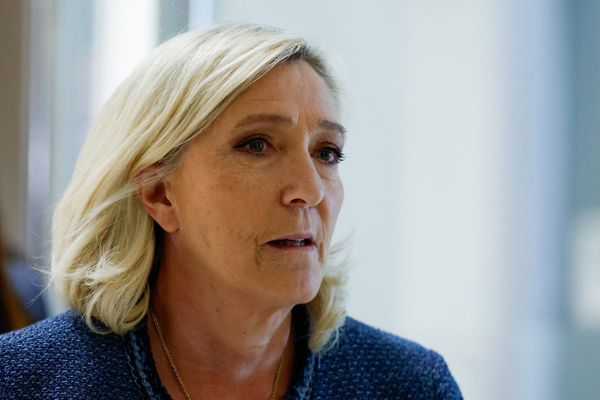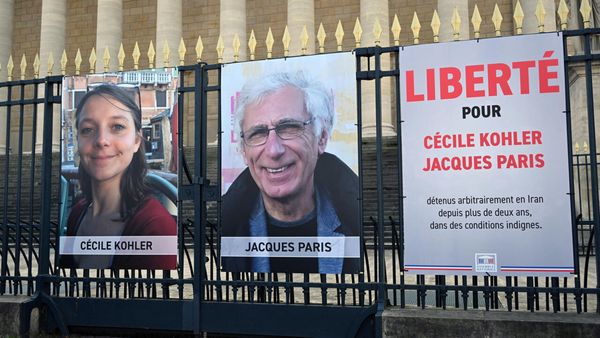
When Yannick and Ben Jakober’s daughter died aged 19, they poured their grief into art. The couple transformed their small set of portraits of children into the Nins, a one-of-its-kind collection. Numbering 165 paintings of children from the 16th to the 19th centuries, it includes works by old masters such as Ottavio Leoni, Frans Pourbus the Younger and François Quesnel, commissioned to capture the offspring of European royalty and the aristocracy in their most vulnerable years. Many did not live to adulthood.
When I meet the Jakobers, it’s towards the end of Mallorca’s holiday season. The taxi taking me to the north-east of the island passes a large black and white billboard advertising their museum (“Life is short. Art is long”), before turning on to a single-track road heading into the hills.
Ben is 94 and delighted I spotted the billboard; the more reserved Yannick is 82. Both were born to creative families – Ben in Vienna, Yannick in Montfort-l’Amaury – who instilled what Ben calls “the collecting bug”. Ben worked for Edmond Rothschild’s finance company in Paris, quitting in 1968. They married in 1972, and in the years since have transformed their family home, designed by the Egyptian architect Hassan Fathy, into the Museo Sa Bassa Blanca. The house, galleries, and gardens are filled with pieces of art they’ve collected, as well as the couple’s own collaboratively produced sculptures. All are put into dialogue, bringing out resonances between subjects, patterns, colours across time and space. The effect is riotous and joyful.
Compared to the heat and colour above, the Aljibe gallery they built to house the Nins – the Mallorcan dialect word for niños, children – has a different atmosphere. A converted subterranean water reservoir, it is quiet, cool and dimly lit. Yannick moves from picture to picture at speed, pointing out the prices and properties of various pigments used, fluidly explaining the symbolic meanings of the fruits, flowers, and animals in each scene.
“Extraordinary,” she repeats, finding something noteworthy in every picture. Yannick explains that many of the images were created to be shipped between European courts to broker marriages and diplomatic alliances – promises often left unfulfilled. She talks about the sitters with a warm familiarity, pointing between pictures to draw out family connections.
Yannick stops in front of Charles Beaubrun’s 1638 painting of Louis XIV, swaddled tight in the arms of his wet nurse, Madam Longuet de la Giraudière, whose right breast is pulled from her canary-yellow silk bodice. The Sun King got teeth early, apparently. “That family really went through wet nurses, because they were all suffering so much.”
The collection began one year after Yannick and Ben were married. When Yannick arrived in Palma in 1963, the first painting she saw was Joan Mestre i Bosch’s Girl with Cherries (1843). It hung in the home of her milliner. “I fell in love.” She offered to buy it, but was rebuffed: the milliner flatly refused to part with it.
Ten years later, Ben resolved to buy it for Yannick. He called on Palma’s foremost art dealer, who had a shop on Carrer de Sant Miquel, “where all the high-up families in Palma would come in for a coffee and he would convince them to sell pieces of furniture and paintings.” Two days later, the dealer called. He had Girl with Cherries.
But it was not until later that the collection grew. In 1992, Ben and Yannick’s daughter Maima was killed aged 19 while motorbiking in Tahiti. Maima was, Yannick says, beautiful and “a bit crazy”. As a child, she had been “a sensitive little girl with a real sense of poetry”, who could invent fluent verses off the cuff.
At the time of Maima’s death, Yannick was working on Piccoli Principi, a book about child portraiture, which turned into a homage to her daughter’s memory. “When something like that happens to you, you want to see what happened to others,” she says. One year later, the couple established a foundation in Maima’s memory. They dedicated the Nins to her, and moved the portraits out of their house and into the Aljibe, purpose-built in 1994.
They tracked down new paintings by scouring auction-house catalogues, calling dealers in Paris and London and talking to antiquarian friends. It was easier at the beginning, when there was less competition (in recent years the dwindling supply of old masters means that portraits have been regularly breaking auction-house sale estimates). “We got marvellous things then,” Yannick recalls. “People were more interested in cats and dogs and horses, especially the English.”
Pausing in front of a group of solemn-looking siblings, Yannick remembers finding the auction unusually tough. She won, eventually. Then she discovered she had been bidding against an aristocrat whose ancestors the painting showed. “She was fierce.”
They bought with what Yannick says is “no other criteria other than emotion”, but avoided the cute or sentimental. As Yannick strides around the gallery she reveals a series of stories about fate’s random cruelties. Pointing at a one-year-old sitting upright, pinching an ermine cape between finger and thumb, Yannick says: “She had a miserable life, but at the time she didn’t know.” The smiling toddler is Princess Caroline Matilda of Wales, depicted in 1752 by Willem Verelst. She was later married off to her cousin, King Christian VII of Denmark. Caroline had an affair with his physician. He was executed, she banished. Caroline died aged 23, from cancer.
Further along the line of paintings is Gabriel Reinés Pocoví’s Portrait of María Concepción Montaner and Vega-Verdugo (1853), which Yannick describes as “very melancholic”. María was killed aged eight, when a mason working on the family estate threw debris at a co-worker, not noticing that María was walking beside him. She holds a pair of scissors, their pointed blades parted – a symbol of life cut short.
Gesturing towards two pansies – representing remembrance – in the hand of a pale toddler shown in Portrait of Boy with Red Tunic and Gold Chain (16th century), Yannick speculates that the painting was done posthumously, to commemorate the child before their burial.
Looking back, Ben and Yannick didn’t know what they were creating. It happened to them. “We’ve been marionettes,” Ben says. He asks me whether I’ve heard of kenophobia, the fear of empty rooms or voids: “When there was a space there, we had to fill it.”
But I’ve come to visit at what Ben describes as a full stop. They’ve exhausted their funds and, “there’s no room for another work”. By the glass door that serves as the entry and exit to the Aljibe hangs the most recent addition to the display: a 1632 painting showing a boy with a blond page-boy cut leading a muscular white horse. It was a gift from a friend – they try not to look at auction house catalogues any more. “Otherwise it becomes never-ending.”
Now they’re preparing for the collection to exist without them. A rose garden that Yannick planted after Maima was killed – an attempt, she says, “to do something fruitful out of loss” – has been uprooted and replaced with olive trees, easier to maintain in Mallorca’s changing climate. As Ben explains: “We’re at the end of our lives, we have to find solutions that are perennial.” And that means, he asserts, “no further purchases. That’s the plan.” He checks himself. “Well, it’s a promise.”







